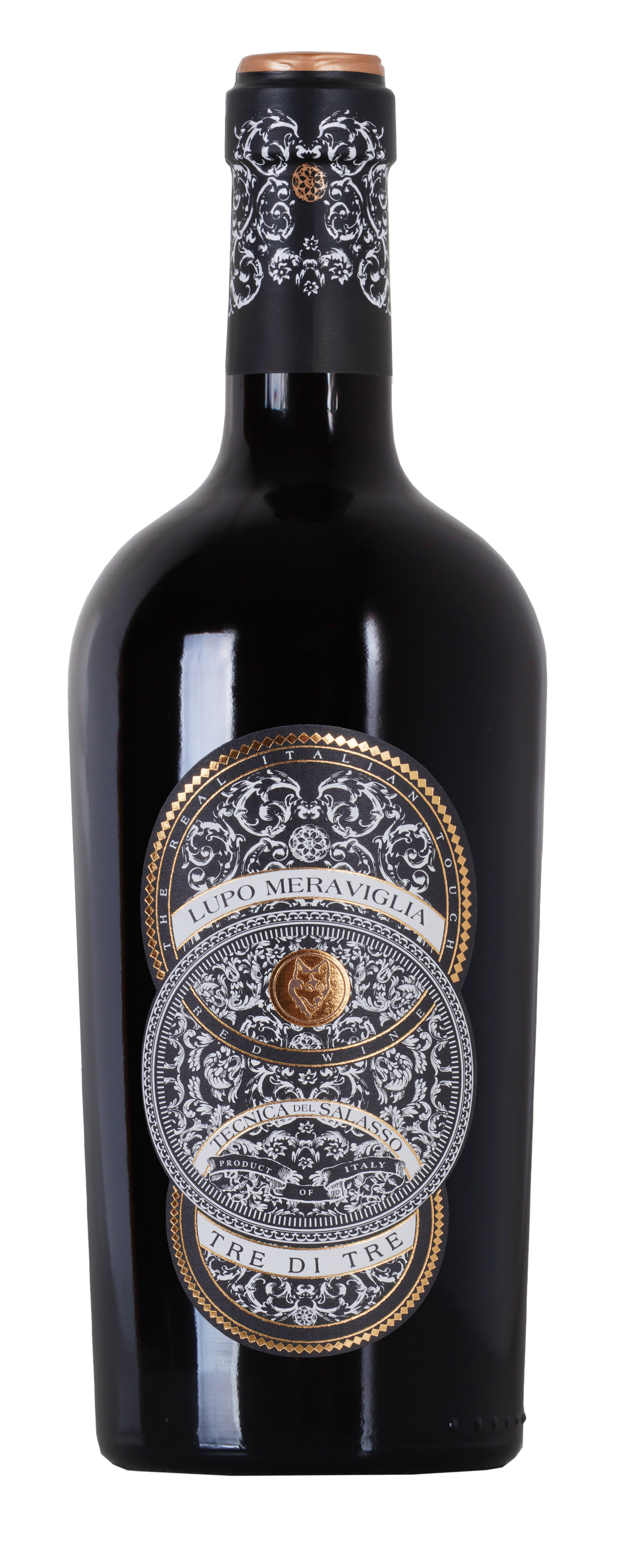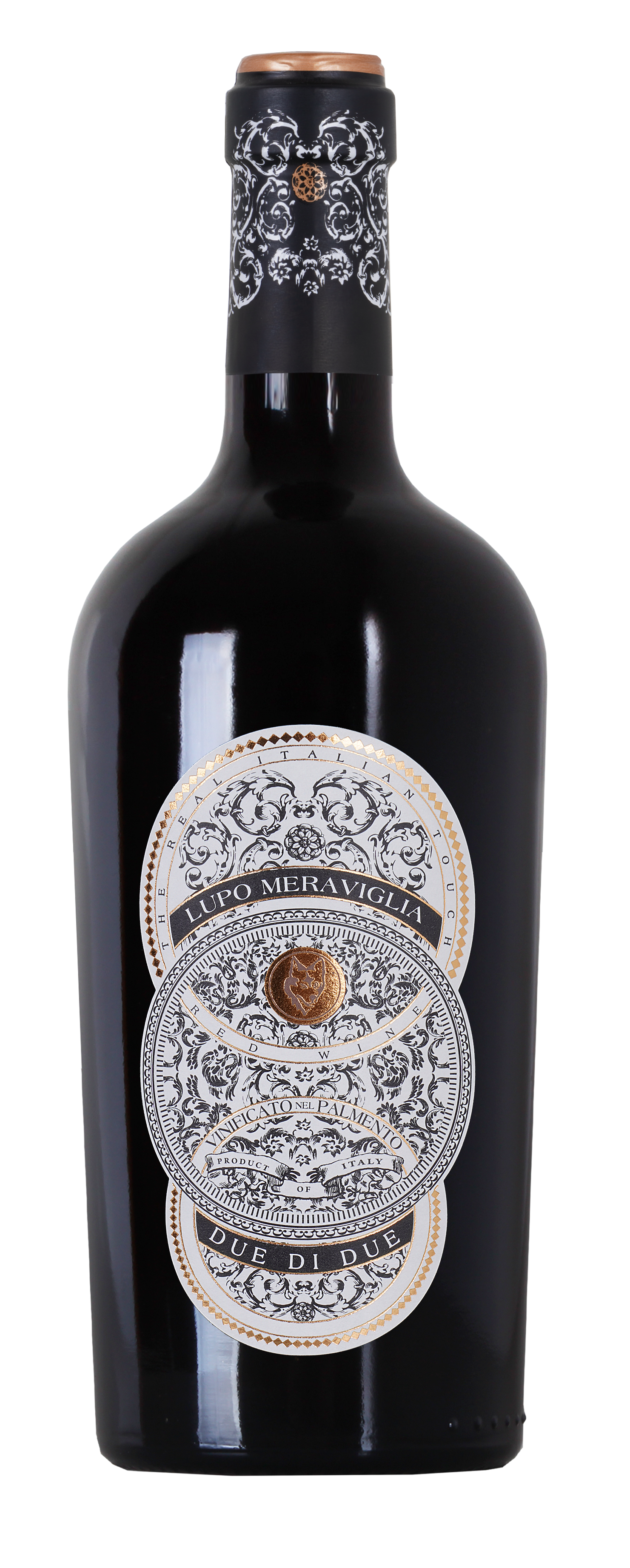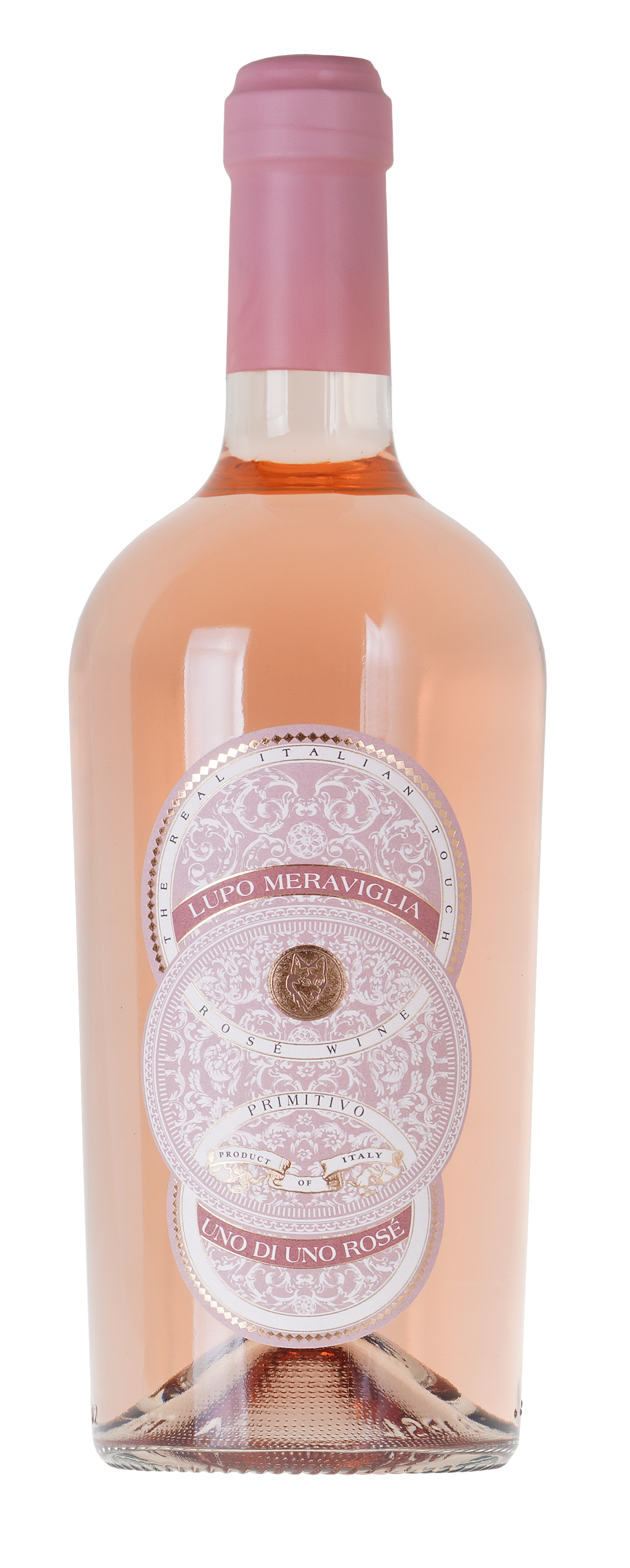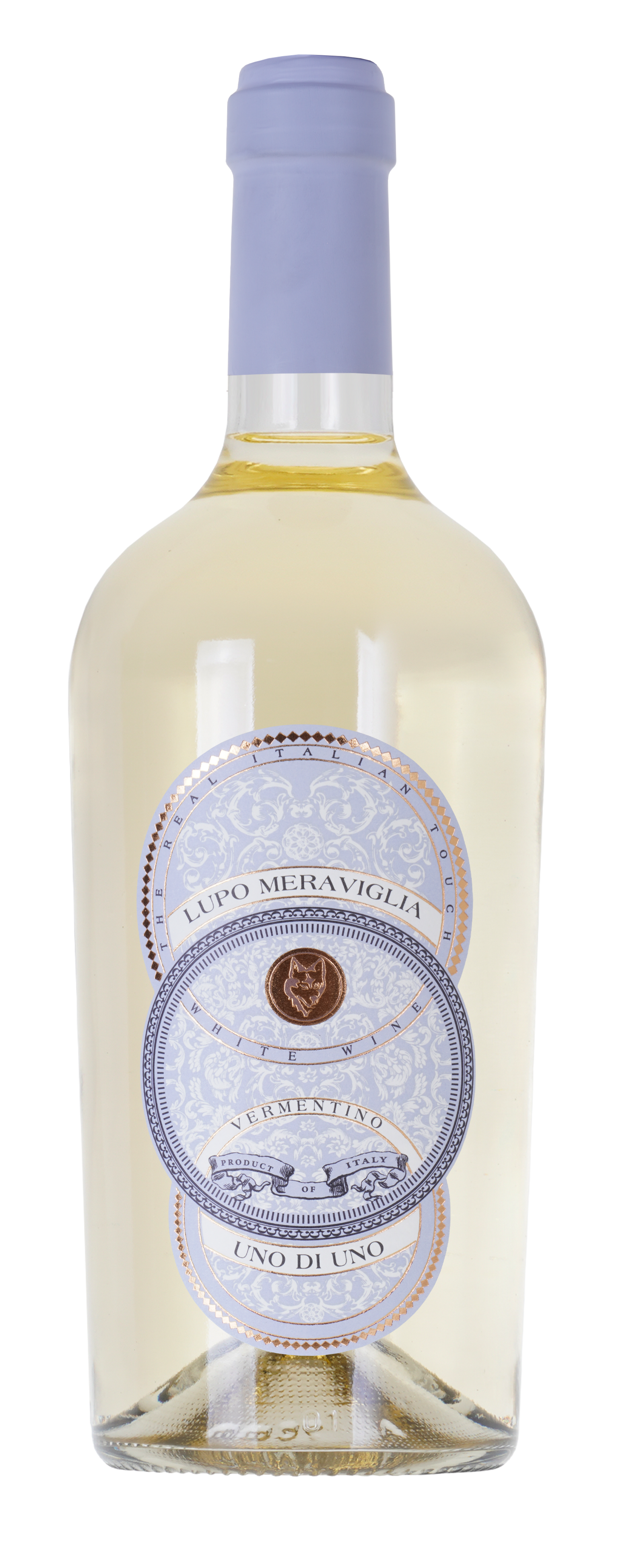Lupo Meraviglia
The peculiarity of this wine, obtained from a blend of Negroamaro and Malvasia Nera, relies in its vinification method which involves the use of millstones during the fermentation process. These ancestral elements had been used in Apulia since the first wine-making experiences, and various archaeological findings attested their presence in the Salento area. They were made of stone and their characteristic shape (low, wide and completely open) allowed a better contact between the must and the skins with respect to the traditional wi-nemaking methods, improving the dissolution of oxygen during the fermentation process. Nowadays, the grapes are vinified inside the “modern” stainless steel millstones, whose shape and characteristics mirror the original ones. The wine obtained, with no oak refining, has a great structure, concentration and a very high persistence; the complete extraction of all the skins parts and the greater dissolution of oxygen during the fermentation process result in more mature tannins, which become less aggressive and more long-lasting.
Tre di Tre Puglia IGT Rosso
- GRAPES: Negroamaro, Aglianico, Primitivo
- APPELLATION PUGLIA IGT
- PRODUCTION AREA: Apulia
- CLIMATE: The climate is warm and temperate, with abundant rainfall throughout the year. In summer, the African winds cause a rapid and marked rise in temperatures with significant temperature fluctuations.
- HARVEST: Negroamaro and aglianico first week of September, primitive end of September
- STORAGE TIME: 7-8 years
- BOTTLE SIZE: 750 ml
- SERVING. TEMP.: 18-20 °C
- ALCOHOL CONTENT: 14,5% Vol
 Deep red, impenetrable
Deep red, impenetrable
 The nose reveals aromas of red fruit and jam that blend with sweet and spicy notes
The nose reveals aromas of red fruit and jam that blend with sweet and spicy notes
 On the palate it exhibits great structure and persistence with a pleasant tannic finish
On the palate it exhibits great structure and persistence with a pleasant tannic finish
 Pairs perfectly with first courses, red and grilled meats
Pairs perfectly with first courses, red and grilled meats
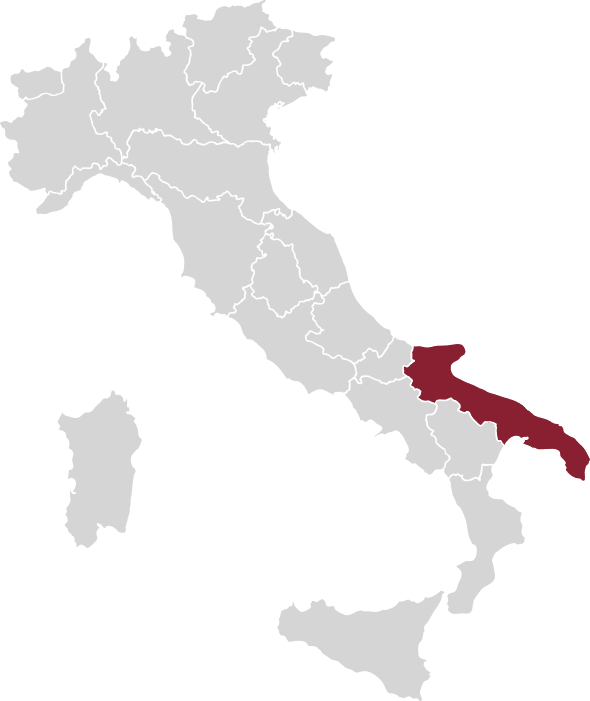
VINIFICATION:
Vinificated using “Salasso” (Bleeding) to fully express the grapes potential. This procedure concentrates the compound extracted in red wine must by increasing the skins-to-juice ratio. Reducing the amount of liquid in contact with the solid constituents enhances the colour, the structural tannins and the intense fruity aromas on the nose. Malolactic fermentation at controlled temperature is completed fully. The resulting wine is aged in vats until bottling.
